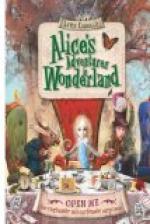|
This section contains 7,373 words (approx. 25 pages at 300 words per page) |

|
SOURCE: Sherer, Susan. “Secrecy and Autonomy in Lewis Carroll.” Philosophy and Literature 20, no. 1 (1996): 1-19.
In the following essay, Sherer discusses Alice's adventures as representative of the Victorian child's desire to retreat to a secret place in order to establish autonomy.
Victorian novels quiver with morbid secrets and threatening discoveries. Unseen rooms, concealed doors, hidden boxes, masked faces, buried letters, all appear (and disappear) with striking regularity in the fiction of Victorian England. So many of these secret spaces contain children, and especially little girls, little girls in hidden spaces. The young Jane Eyre sits behind a curtain in the hidden window seat, escaping the vindictive wrath of John Reed. Repulsed by her angry brother, Maggie Tulliver flees to the house attic, fantasizing that her family will fear that she has died. Little Dorrit withdraws from the common space of the Marshalsea into her private room above the prison...
|
This section contains 7,373 words (approx. 25 pages at 300 words per page) |

|


